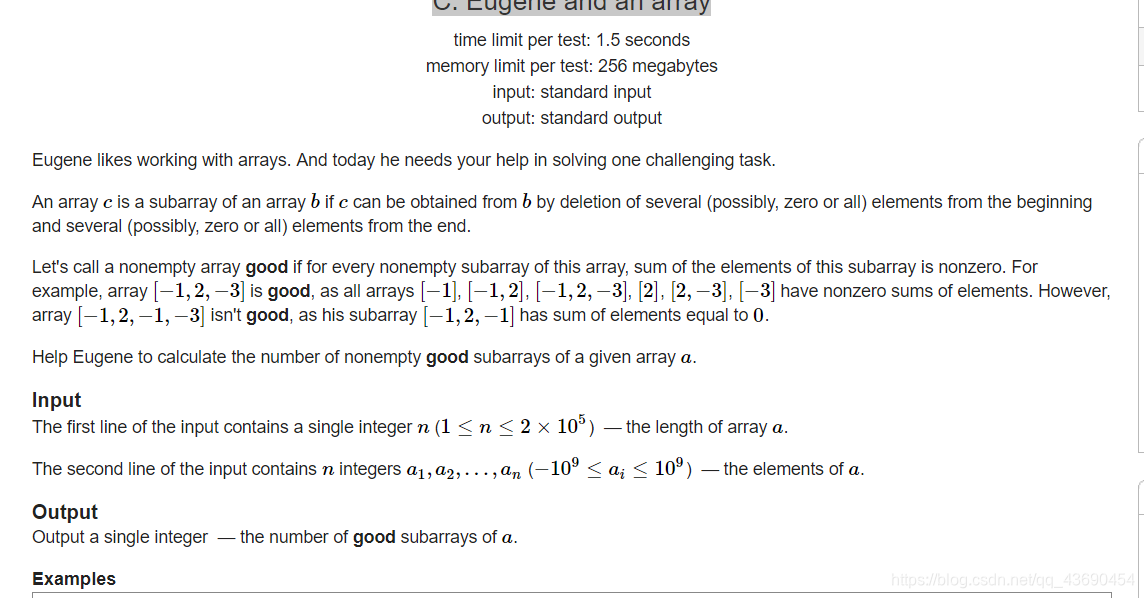

Topic:
Given an array of a, ask how many intervals are not equal to 0.
Parsing:
Reverse thinking, we find out how many intervals are
equal to 0. The idea sum [i] means prefix and
If sum [i] = sum [j], it means that the sum of the interval from i + 1 to j must be 0. So we find the position where it appears for the first time (assuming i), then the contribution is i + 1. Because all the intervals before i will include the interval of 0, +1 is because the sum of the current interval is 0.
Use the map to record
#include<bits/stdc++.h>
using namespace std;
typedef long long ll;
const int N=2e5+10000;
int a[N];
ll sum;
int n;
ll res,x;
map<ll ,int > v;
int main()
{
scanf("%d",&n);
v[0]=0;
int r=-1;
for(int i=1;i<=n;i++)
{
cin>>x;
res+=x;
if(v.count(res)) r=max(r,v[res]);
sum=sum+r+1;
v[res]=i;
}
cout<<(n+1ll)*n/2-sum<<endl;
}
